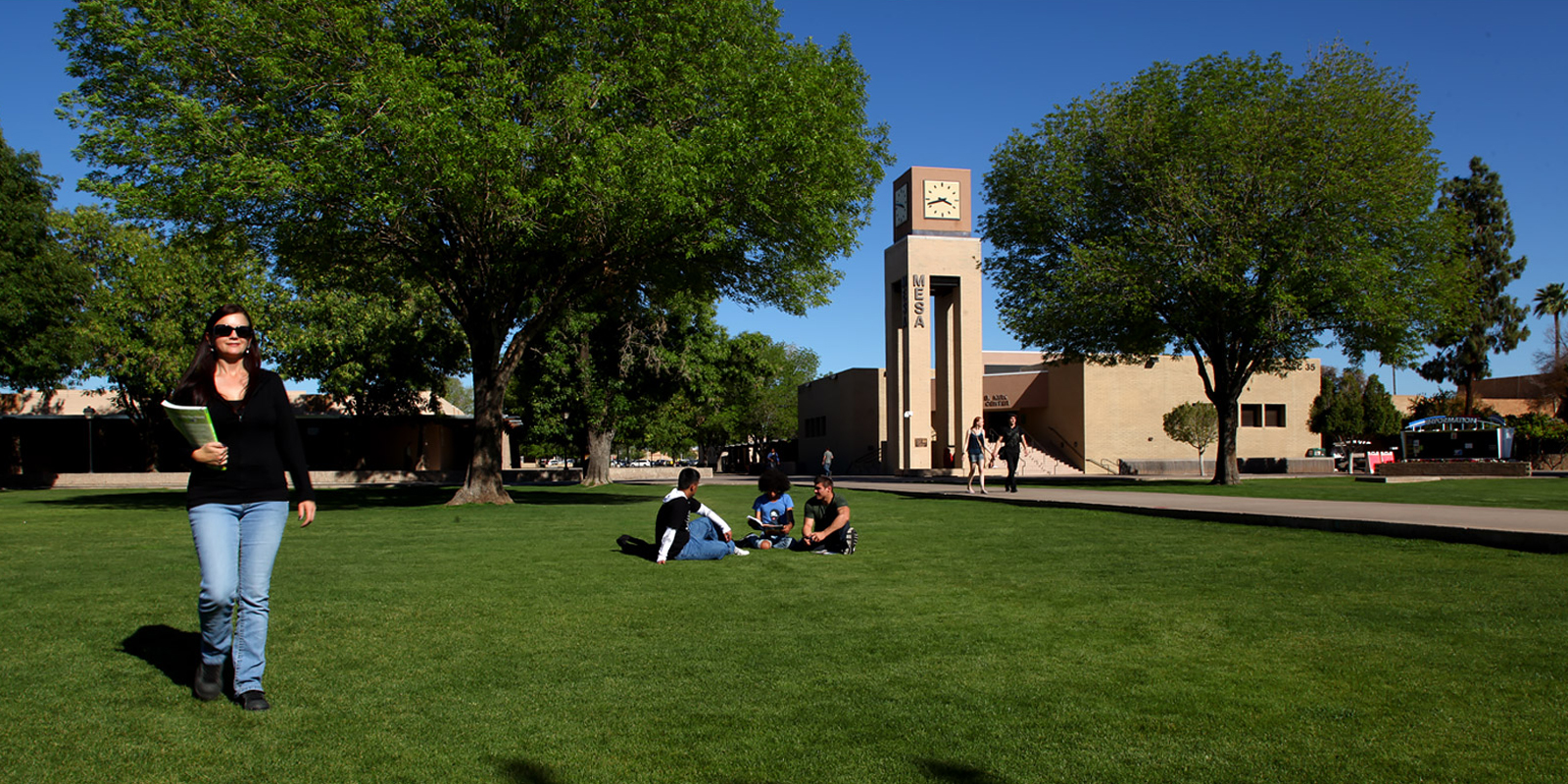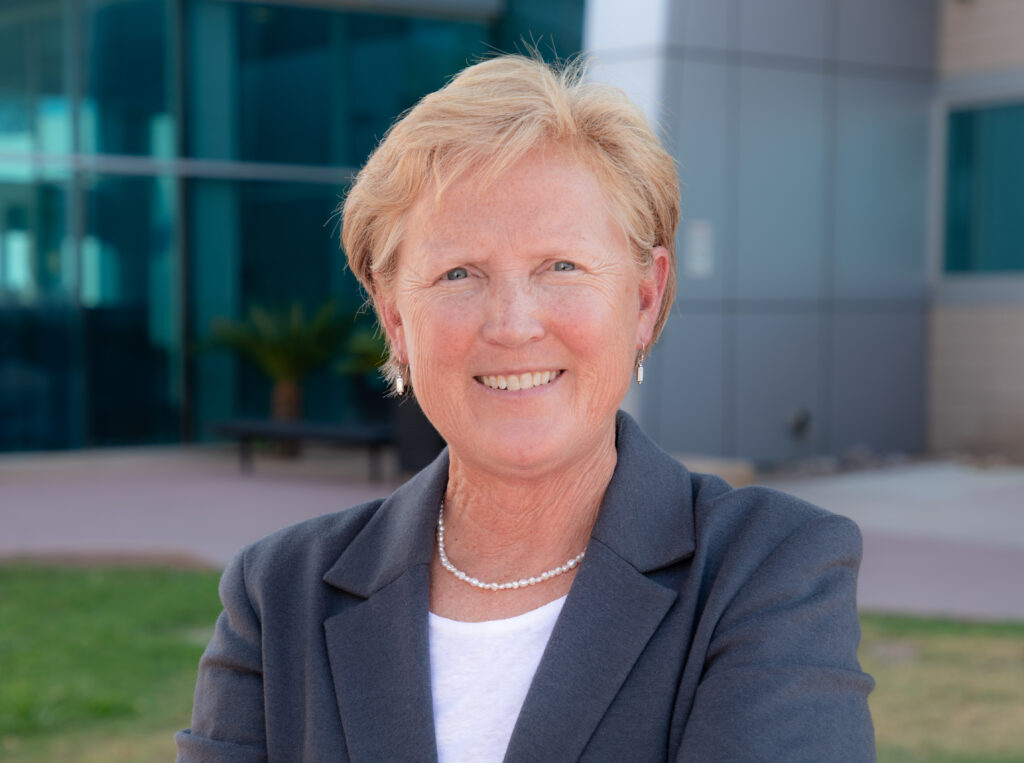
Who really will benefit when Arizona’s community colleges may begin offering four-year degrees in a couple of years after Gov. Doug Ducey signed Senate Bill 1453 into law on May 4?
“It really depends on what your field of study is,” said Lori Berquam, president of Mesa Community College. “We’re never going to offer engineering as a four-year degree. We’re never going to offer chemistry. We’re going to be limited.
“And, you can always start here and then transfer into those fields and get those first two years at a much less.”

The new four-year degree program will not be as radical as it might sound. The number of degrees and the number of majors offered by a community college will be strictly limited, especially in Maricopa and Pima Counties, where community colleges will be permitted to award baccalaureate degrees among no more than 5 percent of their total number of degrees during the first four years of the program, and then to no more than 10 percent thereafter.
Which bachelors programs they offer will be determined by market and community needs, among other criteria.
In Arizona’s 2018 high school graduating class, roughly half of students went on to higher education, and about a quarter of them into a four-year university. Those are low numbers in a growing state with increasing demands in certain fields.
“For example, you can’t find a substitute teacher right now,” Berquam said. “There is a huge demand for teachers. What I can tell you is we’re going to pay attention to our workforce. What does the community need? We are excited for our students to be able to give them an opportunity to get a four-year degree with very little cost and make it more obtainable for more of them.
The half that doesn’t go to (four-year) college, how are they going to have sustainable jobs throughout their lives?”
High on the list of those who will benefit are marginalized students, especially low-income and minority students, who currently might go to community college for two years, get an associate degree and then move directly into the workforce without transferring to a university and completing a four-year degree.
“Many of our students, and especially students of color and low income, have said that they can’t afford to go to one of our universities and get a degree,” Berquam said. “I don’t think we’re taking anything from the universities. I hope not. We’re good partners with them. We consider them to be amazing collaborators.
“What we want to do is address some of those high workforce needs. We can do that on our campuses for about $127 a credit, which is significantly less than at our universities.”
Where Arizona State might charge roughly $12,000 a year in tuition, the community colleges will do it for about $3,000 a year.
Among fields likely to be offered for four-year degrees at community colleges are health care, information technology, police and fire science, and education, fields where there are workplace shortages of qualified candidates.

Berquam and Greg Peterson, president of Chandler-Gilbert Community College, agree that added expenses associated with research coupled with consistently shrinking funding from the state have caused universities to consistently raise their tuition, placing a four-year degree out of reach of many.
Community colleges do not have research expenses and they receive funding from property taxes, allowing them to offer education at a much lower price.
“In those spaces where there is a shortage in the workforce, if we can find ways to decrease costs for that teacher, for example, then hopefully we’ll increase the number of students that are selecting that career,” Peterson said. “They’ll be better able to access it.
“We’re very excited that we have this opportunity. I think it’s our opportunity to demonstrate the great work that community colleges can do. I definitely think cost is going to be of benefit for students.”
That’s touchy. The Arizona Board of Regents and the state universities were not thrilled by the bill.
Berquam and Peterson say that four-year degrees from their colleges will augment but not compete with Arizona State. The community colleges are mindful of not ruffling the feathers of ASU, Arizona and Northern Arizona, with whom they’ve been strong longtime partners in education. The community colleges have been, and plan to remain, a strong feeder system to the universities.

In the East Valley, there are many manufacturing and high-tech companies — Boeing, Apple and Amazon in Mesa; in Chandler, the Price Corridor, filled with high-tech firms needing trained employees, especially at computer-chip giant Intel, which recently committed billions of dollars to build two more chip plants.
Peterson was in California when that state approved a community-college four-year degree plan similar to Arizona’s. The partnership among the California and California State university systems with the community colleges has proven to be successful. Those entities coexist more or less peacefully, providing access to higher education for more students, in turn putting more employees into the workforce and boosting the economy.
“It was a rigorous process and, as we know, California is highly regulated,” Peterson said. “They wanted to make sure there wasn’t competition there. There are similarities.”
Arizona’s universities may offer input into community college four-year degrees but they may not veto a proposed offering.
“We’ll try to be mindful of how we’re using our resources so we’re not duplicating in spaces that are not beneficial for our communities,” Peterson said. “California found success in their program. I think that Arizona is going to find the same thing by creating more opportunities for our students, especially in niche programs where there is great demand.”
Peterson anticipates that the 10 Valley institutions in the Maricopa County Community College District will huddle to assess student demands and industry demands in their communities as they discuss potential four-year offerings, and likely partner regionally so their offerings are more different than they are alike.
Berquam points out there will be accreditation and licensure processes before the four-year programs are approved for roll out, likely for fall 2023.
“We don’t want to overproduce a student with a skill set and then not have a position for them in the workforce,” Peterson said.

